In 1969, Ford unveiled the 351 Windsor engine. It was in response to the huge demand for a more potent model in the automaker’s stock lineup. Ford kept using this standard engine model in its cars for the following 30 years. So, what is the firing order of the Ford 351W?
The Ford 351 Windsor engine features a unique firing order compared to other V8 engines. It is 1-3-7-2-6-5-4-8. Keep in mind that Ford numbers the cylinders from the front left. When you get the firing order right, it will guarantee the perfect spark plug fires, and your engine will work very smoothly.
Read on to learn more about the Ford 351 Windsor engine’s firing order and the common problems.
Ford 351W Firing Order
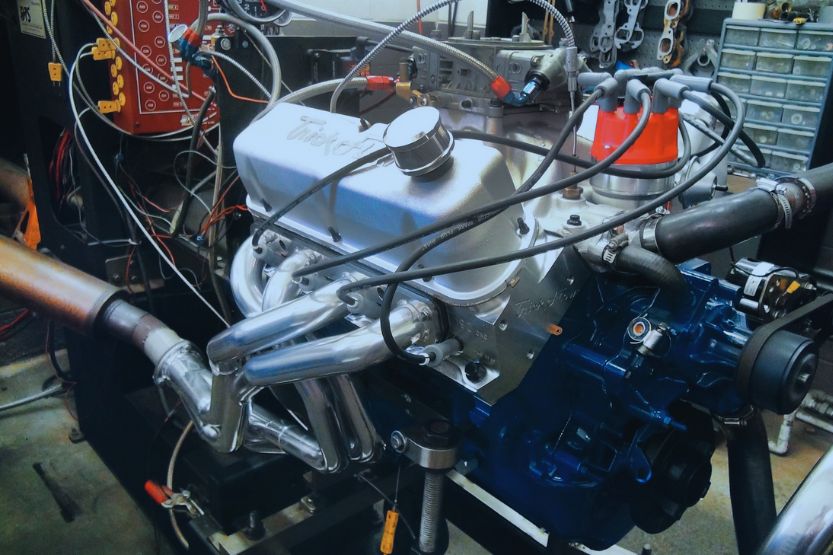
Largest Member of the Ford “Small Block” Engine Family
The Ford 351 Windsor is the largest Ford “Small Block” engine family member. It features an overhead valve train with a unique firing order of 1-3-7-2-6-5-4-8.
351 Represents the Space Occupied by Eight Cylinders
The 351 represents the volume of space by all eight cylinders operating normally. The engine was built in Ford’s Windsor, Ontario, hence the name “Windsor.”
Resembles the 302 Engine in Terms of Size and Design
The 351 is a taller block that resembles the very popular 302 in size and design. This increases the cubic inches by allowing the piston to go farther inside the cylinder.
Spark Plugs’ Firing Order
Spark plugs in the 351w are fired in the proper order: 1-3-7-2-6-5-4-8. This ensures that the engine runs smoothly before you disconnect the plugs.
Moreover, knowing the firing order will enable you to restore the correct wire to each plug if you accidentally rearrange them. That does not mean Ford will use the exact firing order for all 351 Windsor engines.
Some Units Use the Ford 302 Firing Order
Because of changes made over the years, some units now use the Ford 302 or 4.6 firing order instead, assuming that the cylinders are labeled correctly.
If your engine doesn’t respond well to the firing order of 1-3-7-2-6-5-4-8, you can try other Ford engine firing orders, such as 1-5-4-2-6-3-7-8, to see if the engine performs better.
Drivers that use high-performance cams seem to have performance concerns the most with the 351w. If that happens to be you, you should never use a dual-plane carbureted manifold. Why? Because most of them are set up for the 137’s firing order.
How Reliable Is the Ford 351W?
Equipped with Sturdy Rods, Pistons, and Other Internal Parts
The 351W is essentially unbreakable. The blocks are highly sturdy and won’t malfunction even on models built after 1975. The rods, pistons, and other internal parts are also incredibly sturdy.
Can Withstand Harsh Conditions
The 351W is robust and can withstand harsh conditions. Remember that these engines are getting older even though the block, internals, head, and other major components are solid.
Minor Problems with the Intake and Exhaust Manifolds
Having said that, and given the age of such an engine, everything from oil leaks to coolant leaks to water pumps is susceptible to failure over time. The intake and exhaust manifolds may have minor problems.
Other than that, you won’t encounter any problems with the 351W.
Proper Maintenance Is the Key
Remember that the key is always proper maintenance. The 351W engine is most susceptible to heat; therefore, reliability depends on avoiding coolant leaks and engine overheating. Ensure your 351 modification has a sufficient cooling system to prevent excessive engine heat.
The main parts of the 351W engine should have no problem exceeding the 300,000-mile milestone with regular maintenance and care.
Strongest Small Block on the Market Despite the Casting Issues
In 1969, Ford started casting the 351 Windsor, and it continued to do so until 1996. Before that, vacuum pressure or pneumatic packers were used in casting. While such techniques were effective, moving the mold core was a problem.
To achieve the minimum requirements, Ford needed extra material in the block. Ford improved its molding processes after 1974, which made the additional material unnecessary.
Even though newer blocks are “weaker” than previous blocks due to a material shortage, 351 blocks are still the strongest small blocks on the market and should be able to handle any horsepower figures.
Ford 351W Modifications Throughout the Years
To reduce the compression ratio for emissions in 1971, Ford increased the deck height from 9.48 inches to 9.503 inches. An additional boss was added to the engine in 1974 to accommodate an air injection pump. The oil dipstick was also relocated under the left cylinder bank in 1974.
Ford modified the intake manifold mounting on the block from 16 bolt holes used until 1976 to 12 bolt holes starting in 1977. We should add that the 351W has larger head bolt holes than the 302.
The identical heads can still fit. However, if you place a 302 head on a 351W, you will have to drill it out first to make room for this.
Ford changed the main seal’s outdated 2-piece design to a more contemporary 1-piece rear main seal in 1983. 1994 saw another design change in the engine’s development to allow for roller lifters and camshafts rather than flat tappet lifters and camshafts.
These blocks are in high demand since this alteration is rare and only present in the latter two years of manufacturing.
They are often referred to as “F4 blocks” or simply “roller blocks,” thanks to their casting number.
Again, what is the firing order for a Ford 351 Windsor? The Ford 351 Windsor with firing order 1-3-7-2-6-5-4-8. This is similar to many other Ford V8 engines. Note that Ford designates the cylinder number from the front left.
3 Signs Your 351W Spark Plugs Need to Be Changed

Since Ford stopped offering 351 Windsor after the 2014 model year, most of the road’s engines are approaching 100,000 miles and beyond. That means that it’s time to start planning a tune-up.
Some cars require a tune-up before they reach the 100,000-mile mark on the odometer. Others can travel well beyond that distance.
Thus, the following signs will let you know when it’s time to start changing the spark plugs in your 351W:
1. Coolant Leaks Around the 351W Timing Cover
Much like the Chevy 350, the 351w has a cover that shields the timing chain and sprockets from dust, mud, and grime. A gasket secures the timing cover to the front of the block with bolts. The timing cover gasket degrades and develops leaks with time, as is typical for most gaskets.
Engine coolant will leak around the timing cover if the gasket malfunctions. Moreover, it is typical for the gaskets next to the water pump to let coolant leak, which will cause coolant to seep around the timing cover.
When this happens, the only thing you can do is replace the gaskets. Fortunately, the gaskets are inexpensive and easy to replace if you are familiar with engines.
The other thing is that running low on coolant repeatedly is the most apparent sign of coolant leaking. It is essential to keep your 351W coolant level at the recommended amount to avoid overheating and significant engine damage.
The most common reason for catastrophic engine failure is when the 351W engines do not tolerate more heat well.
2. Cracked Exhaust Manifolds
The engine block’s exhaust ports use fasteners to connect to an exhaust manifold. Each of the two exhaust manifolds on the 351W is made of cast iron and is in charge of four cylinders.
Cast iron expands during heating and contracts after cooling, which is why it is subjected to a lot of pressure during the engine’s intermittent cycles.
The continual engine vibration and heat cycling eventually cause the manifolds to break, which results in an exhaust leak. Exhaust leaks can adversely affect the environment, let alone cause several performance problems, including a loss of power or acceleration.
The OEM manifolds on the 351W usually start to fracture when you go beyond the 120,000 miles. Unfortunately, there is not much that you can do in terms of preventative maintenance. The only thing you can do is change the manifolds beforehand or switch to performance manifolds.
3. Weak Cylinder Blocks
Although not necessarily a concern, if you are a performance fan, you should be aware of this. The strongest blocks in the 351W are those from 1969 to 1971. The years 1972–1974 were also strong, albeit a little less so than the ones before.
Ford modified the block castings in 1975 to create a lower-weight block. The company effectively reduced the amount of metal used in the block, making different block components smaller than the older models, which were thicker and had more metal support.
While this is not always a concern, you will still need to modify your 351W engine now and then. You should also consider the block’s capabilities and the power levels you aim for.
How to Change Spark Plugs Yourself
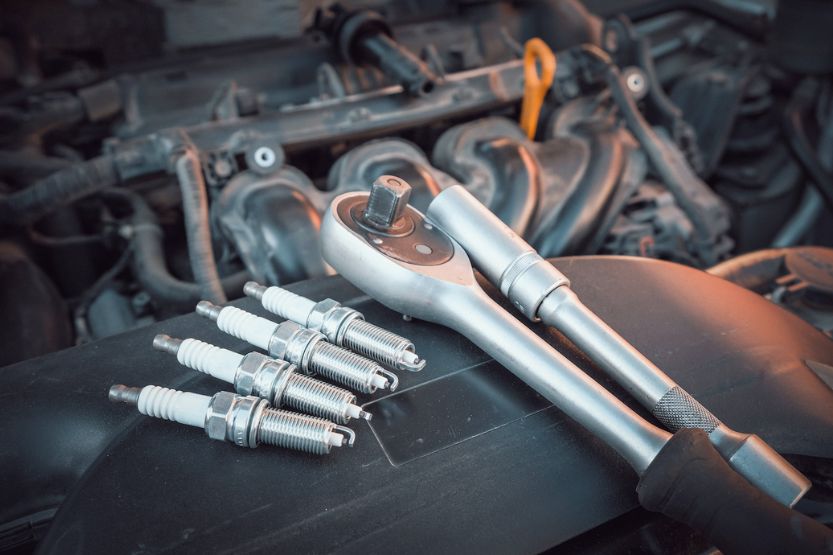
Once you experience any of the symptoms above, It is time to take your 351 Windsor to a reputable mechanic to replace the spark plugs.
The good news is that changing the spark plugs in an engine is a relatively simple process. You could even complete the task yourself if you have the necessary equipment at home:
1. Choose a High-quality Spark Plug
Choose a high-quality spark plug for your Ford engine. Although 30,000-mile items are inexpensive and straightforward, we recommend you spend extra money on the 100,000-mile alternative.
Additionally, you will require spark plugs compatible with your Windsor 351W engine. You should avoid gapping them manually, as this may harm the coating, but you still need to ensure correct spacing.
2. Follow the Instructions from the Manual
Above all, you must always adhere to the instructions in your owner’s manual. It is usually okay to improve the equipment, but you should not go below the minimum standards established by Ford.
If you go lower than advised, you may experience some performance problems. To access the spark plugs, you first need to remove the top plenum or intake manifold, which means you may need a new gasket in addition to the tools and plugs.
3. Always Put Safety First
Place your Ford engine in a dry, level area. The engine should always be cool before you start performing any repairs. You must also clean the surroundings to stop anything from falling into the cylinder.
Above all, you should unplug the negative side of the battery and consult your owner’s manual for further instructions before you start.
4. Take the Plug Wire Out
Remove any obstructions that make it difficult to reach the spark plugs. Perhaps, you might need to take out the upper intake plenum. Once you reach the area, you must remove the rubber wire very carefully.
Please remember that the interior terminals are highly delicate. Use pliers if you have a spark plug wire that will not break free from its bond.
5. Remove the COP
A lengthy insulator boot connects the coil on the plug end directly to the plug. You must lift or press down on the locking tab to generate a release. Sometimes, you might need a small screwdriver to reach the tab.
Once you properly unplug the connector, take out the bolt while quarter-turning the coil until it breaks. It should then pull out straight away at that moment. If the boot sustains any damage, you will need to replace it.
6. Remove the Spark Plug
Once the engine has cooled, you can use the socket to remove the spark plugs. Injecting air into the hole will prevent thread damage. Now, remember that even the smallest item can hurt the head, so when this happens, you can use a thread restorer to fix things.
Moreover, you can use penetrant fluid, give the plug roughly a half-turn, and then continue.
7. Replace the Spark Plugs
It is time to replace the old spark plugs with the new ones once you have correctly removed all of the old ones. Please check that each set of threads is straight and tidy.
The electrode tip should be undamaged. It helps to compare the component number to the box to ensure you have the correct item. You should carefully avoid cross-threading when installing each one of them.
8. Start the Engine After Reinstalling the Wires or Cop
You must know the firing order of your 351W before you do this, which is 1-3-7-2-6-5-4-8. You will be able to start the engine and see if everything went to plan once you make sure that the cables are in the proper order.
If a cylinder misfire occurs, turn off the engine right away so that you can check what went wrong. Perhaps you tagged something incorrectly.
Always refer to your owner’s manual when you are unsure about something. For more help, you can also get in touch with Ford or the service division of a nearby dealership.
Conclusion – Ford 351 Windsor Firing Order
The Ford 351 Windsor engine has an excellent acceleration profile with a firing order of 1-3-7-2-6-5-4-8. When you get the firing order right, your engine will run smoothly, and the perfect spark plug will always ignite.
Even though the 351W doesn’t get excellent fuel efficiency, it is astonishing to see how it accelerates quickly from a stop sign or red light and hear it growl.
There will come a time when you need to replace the spark plugs on your Ford 351W, and we hope this article has shed some light on how to do it right.
Read next:

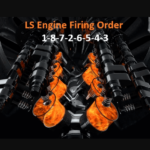
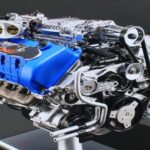
![Ford Vehicle Order Tracker [How to Track Your Order] Ford Vehicle Order Tracker](https://roadsumo.com/wp-content/uploads/2022/05/Ford-vehicle-order-tracker-150x150.jpg)
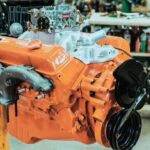
![Chevy 350 Firing Order [V8 Big Block, Small Block, 5.3, 5.7] chevy 350 firing order](https://roadsumo.com/wp-content/uploads/2021/07/chevy-350-firing-order-150x150.jpg)
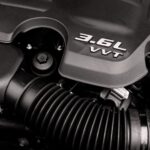
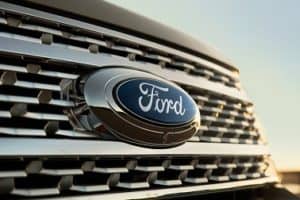
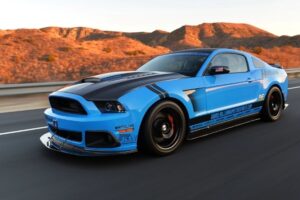
![Read more about the article Ford V10 Life Expectancy [How Many Miles Will It Last?]](https://roadsumo.com/wp-content/uploads/2021/06/ford-v10-life-expectancy-300x200.jpg)